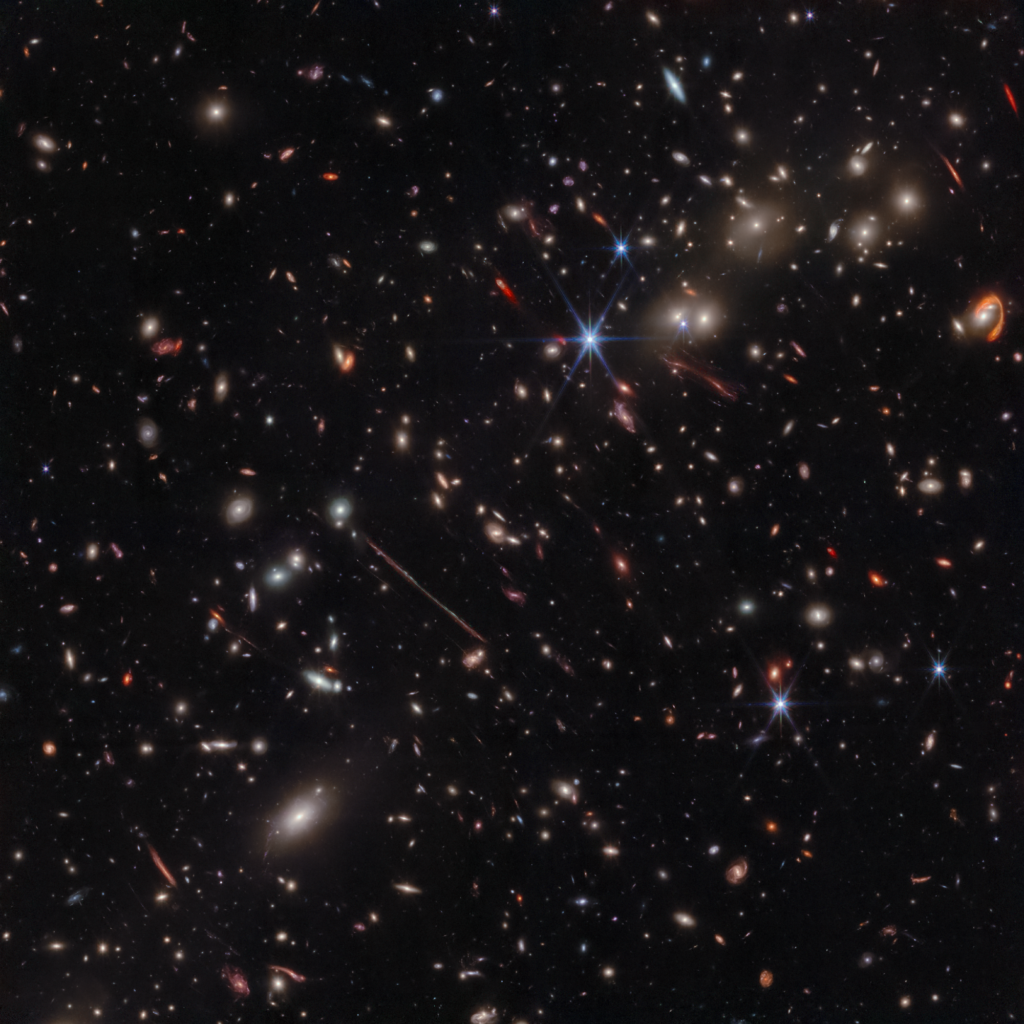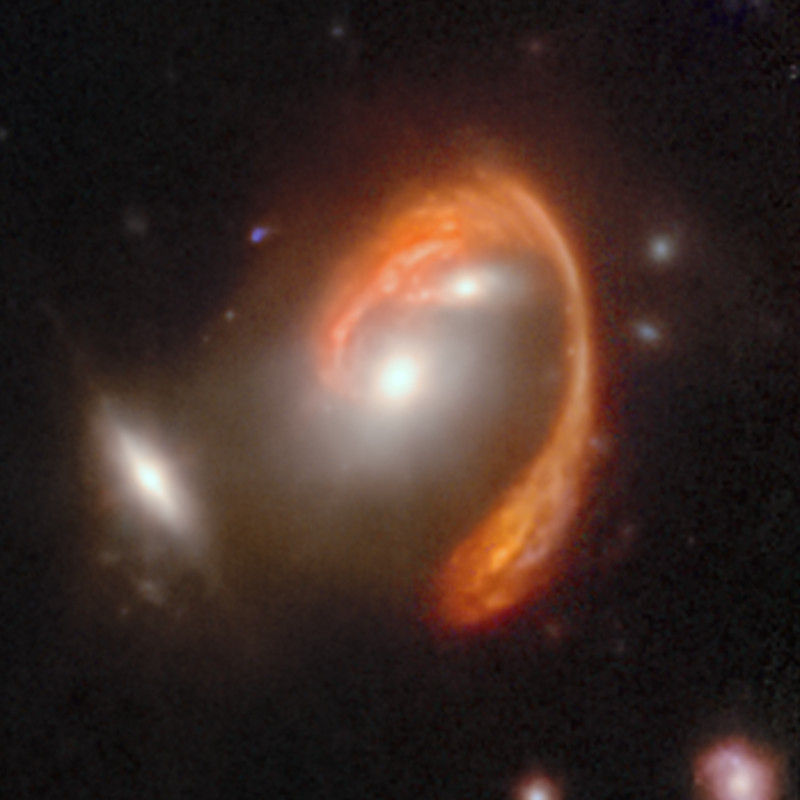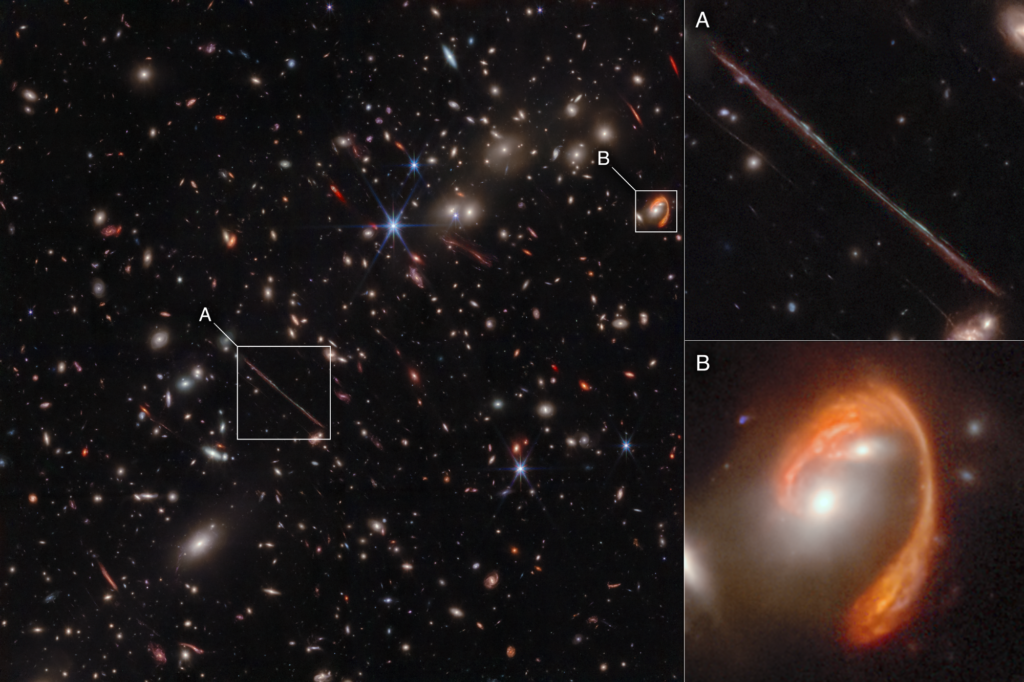Astronomers have published new images taken by the James Webb Space Telescope (JWST). On one of them you can see an unusual-looking galaxy resembling a giant fishhook.
Space Teenager
The purpose of the JWST observation was the El Gordo galaxy cluster. We see it the way it was 6.2 billion years ago, when the age of the Universe was two times less than the current one. Therefore, researchers figuratively compare it with a “space teenager”.

El Gordo has attracted the attention of astronomers due to the fact that it is a gravitational lens. The mass of the cluster is so large that it amplifies light from more distant background galaxies. This gives scientists the opportunity to observe objects that would otherwise be too dim for even JWST to see.
Galaxy – Fishhook
One of these lensed galaxies can be seen on the right side of the main JWST image. It stands out from the neighbors due to its unusual shape, which resembles a fishhook, as well as its characteristic red-orange color.

In reality, this galaxy has the shape of a disk. It “turned” into a fishhook thanks to the gravity of El Gordo, which distorted the direction of the light emitted to it. As for the characteristic color, it is due to a combination of reddening from dust inside the galaxy and cosmological redshift due to the extremely large distance. The researchers found that the light emitted by the galaxy took 10.6 billion years to reach Earth.
Astronomers also determined that the diameter of the galaxy was 26 thousand light-years (this is almost four times smaller than the diameter of the Milky Way), and also studied the history of its star formation. It turned out that star formation was already on the decline in the center of the galaxy.
Record-breaking distant red giant
The JWST image also included other curious objects. For example, a long thin line to the left of the center of the image. This is another background galaxy distorted by a gravitational lens. The light emitted by it took 11 billion years to reach the Earth.

In one of the neighboring galaxies, which image was also distorted by the gravitational lens, the researchers managed to make out a red giant. It was named Quyllur, which means “star” in Quechua.
Hubble had previously found other lensed stars (such as Earendel), but they were all blue supergiants. Quyllur is the first red giant found at a distance of over 1 billion light-years from Earth. Such stars with a large redshift can only be detected by observations in the infrared range. Astronomers expect that in the future JWST will find many more similar red giants.
According to https://www.nasa.gov
Follow us on Twitter to get the most interesting space news in time
https://twitter.com/ust_magazine

